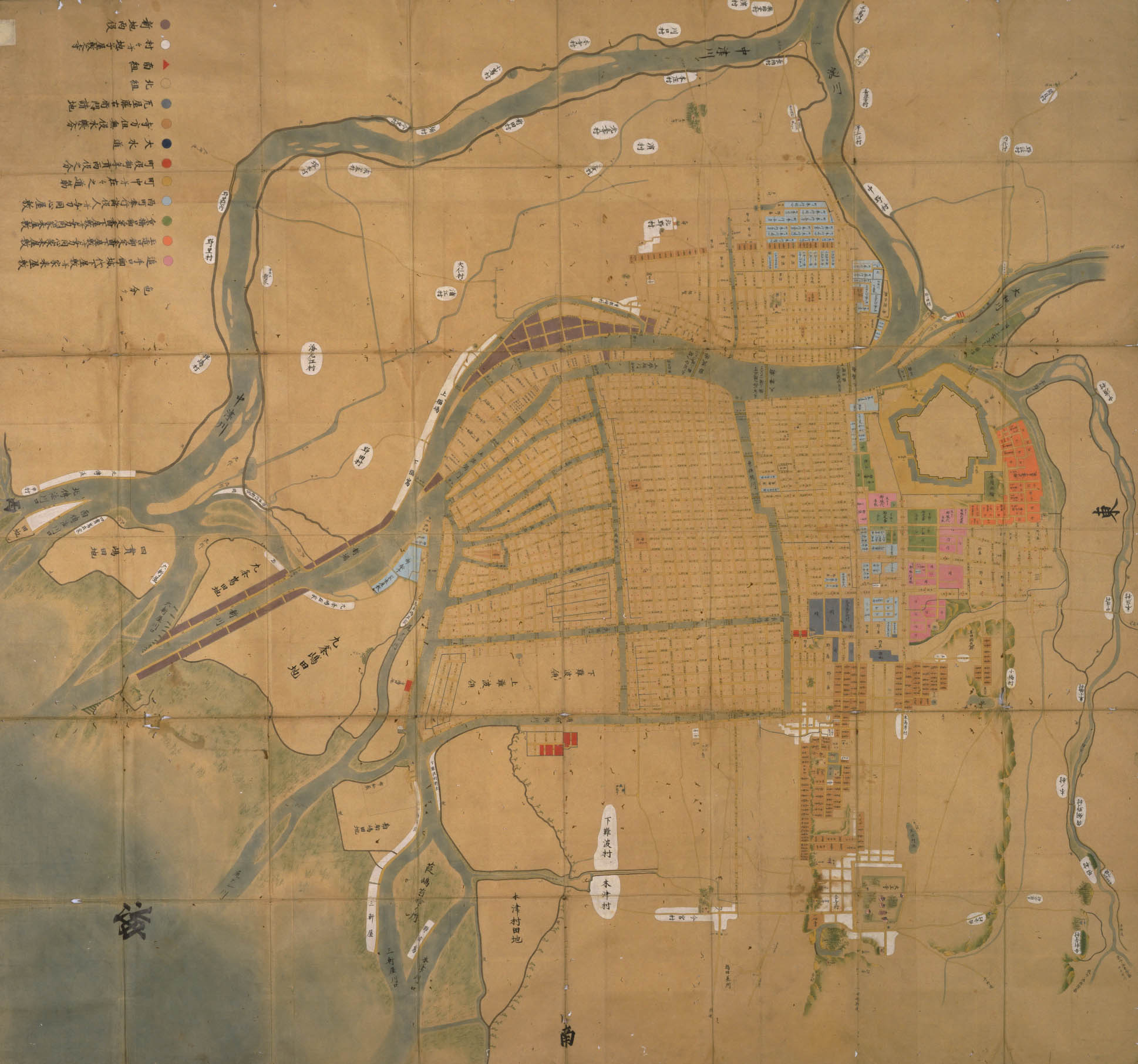Hero Image: ”The Map of Osaka’s Three District(Jōkyō-era)”
owned by Osaka Museum of History
大坂三郷町絵図(貞享) 大阪歴史博物館所蔵
Hello, everyone. My name is Saga Ashita. I’m a professor of Japanese history at Osaka City University (OCU).
In this course, we, the Japanese history faculty, will tell the story of the city of Osaka, from early modern period to present, and also provide you with an introduction to the leading edge of research in urban history
“Japanese history” as taught through middle and high school is often regarded as a rote memorization subject, with classes centered on remembering dates, names, and historical events. Some have criticized this style of pedagogy, arguing that what’s important for students to learn is the general flow of history, not its minute details.
By contrast, we believe that it is vital to acquire a grasp of both the concrete facts and the great trends of history, with the latter grounded in the former. But don’t think that this means we want to double down on the importance of rote memorization and the political history-centric curriculum in schools. Far from it.
What we argue for is the historical importance of our everyday lives as average people—lives that at first glance might seem to consist in merely doing the same things over and over again, but which actually, through the sediment of that repetition, serve as the foundation for the grandest movements of history. Think about all the different facets of everyday life: working and making things; then moving, buying, selling, and consuming those things; and ultimately creating families and sharing the necessities of life while living and cooperating in the urban and rural communities that we build together. It’s easy to use the events that appear in textbooks as the standard for thinking about how history happens. But in reality the roots of history are constituted in our daily life and work, and only on this basis does the history of powerful figures like Oda Nobunaga and Toyotomi Hideyoshi unfold.
We hold that the greatest joys and attractions of historical research lie in reconstructing ways of life—the relationships of interdependence that sustained them, and the spaces they took place in—thereby bringing to light the history of common folk living out their lives from day to day and through the ages.To illustrate such lives concretely, this course looks to the city of Osaka.
What comes to mind when you hear “city” or “urban history”?
At present, our societies have urbanized almost entirely: as more and more people have concentrated into cities, our lives have become rooted in urban infrastructure and the electricity, gas, and water it provides. Using Osaka as an example, we need look no further that the Dōtonbori area for the scenes that have come to epitomize the urban metropolis: throngs of tourists, both foreign and domestic, enjoying shopping and dining in the places of commerce and restaurants that line the bustling streets.
However, this commonplace image of cities is no more than a single shot in a long series: urban societies have taken shape through the deep, multi-faceted, and rich layers of history that accumulated as people lived their daily lives and built their communities. This is of course just as true of the city we live in today. And so in this course we will use the latest scholarly methods to reconstruct Osaka’s history, the foundations of which lie in the lives and livelihoods of the common people of each age.
Though in this course we tell the history of Osaka primarily from the Uemachi area (the city is many times bigger today), we will also give attention to the outward expansion of the city and its international position, sometimes using comparisons with Edo-Tokyo to further our understanding.
Furthermore, we’ll be making extensive use of the texts, illustrations, and other primary sources and visual materials that together allow us to reconstruct the true shape of the city’s past, working closely with other institutions, such as the Osaka Museum of History.
To make the course available to a wider audience, we’ve also prepared English subtitles for each lecture. We very much hope that the course will reach people overseas with an interest in Japan’s urban history, especially international undergraduate and graduate students who might be considering studying urban or Japanese history at a university in Japan.
With that, let’s get started on our journey, following the frontiers of urban historical research in Japan through the twists and turns of Osaka’s past.
